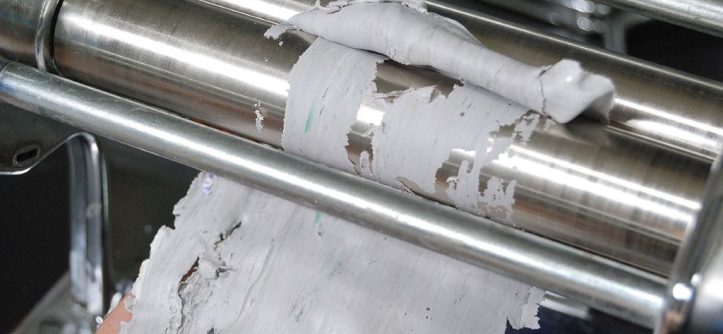Nothing disrupts homemade pasta night quite like a jammed pasta roller. Whether you’re a seasoned chef or weekend cooking enthusiast, encountering a stuck pasta maker can feel frustrating. However, fixing a jammed pasta roller doesn’t require professional repair skills or expensive replacement parts.
Most pasta roller jams occur due to dried dough buildup, misaligned components, or improper cleaning techniques. Additionally, understanding the common causes helps prevent future issues. This comprehensive guide walks you through five proven steps to restore your pasta maker’s smooth operation. Therefore, you’ll be back to creating delicious homemade pasta in no time.
Understanding Why Your Pasta Roller Gets Jammed or Stuck
Common Causes Behind Pasta Roller Malfunctions
Pasta rollers typically jam due to several predictable factors. Dried dough residue represents the most frequent culprit, accumulating between rollers after repeated use. Moreover, flour buildup creates sticky surfaces that prevent smooth rotation. Users often skip thorough cleaning, allowing particles to harden overnight.
Temperature changes also affect pasta roller performance significantly. Cold environments make metal components contract, creating tighter spaces between moving parts. Furthermore, humidity variations cause wooden handles to expand or shrink. These environmental factors contribute to mechanical resistance during operation.

Identifying Different Types of Pasta Roller Problems
Understanding your specific issue helps determine the appropriate solution approach. Complete blockages prevent any roller movement, while partial jams allow limited rotation with significant resistance. Additionally, some problems manifest as uneven pasta thickness or visible debris between rollers.
Strange grinding noises often indicate foreign objects lodged within the mechanism. However, smooth but difficult turning typically suggests lubrication issues or component misalignment. Therefore, proper diagnosis guides effective repair strategies.
Step 1: Safety Preparation and Initial Assessment for Your Stuck Pasta Roller
Essential Safety Measures Before Beginning Repairs
Safety preparation prevents injuries during pasta roller maintenance procedures. First, disconnect electric models from power sources completely. Manual pasta makers require stable positioning on clean, dry work surfaces. Additionally, gather necessary tools including soft brushes, clean cloths, and food-safe lubricants.
Examine your hands for cuts or open wounds that might contact food preparation surfaces. Therefore, wearing food-safe gloves provides additional protection. Clear adequate workspace around the pasta roller to prevent accidental damage during disassembly.
Conducting Thorough Visual Inspection Techniques
Systematic inspection reveals the extent of your pasta roller’s jam condition. Check for visible dough chunks, flour accumulation, or foreign debris between rollers. Additionally, test the adjustment knob’s movement range and examine all external components for damage signs.
Document problem areas using photographs for reference during reassembly. However, avoid forcing stuck components during initial assessment. Therefore, gentle exploration prevents additional damage while gathering diagnostic information.
Step 2: Gentle Cleaning Methods to Remove Debris from Jammed Components
Safe Dough Removal Techniques for Pasta Makers
Begin debris removal using soft-bristled brushes designed for kitchen equipment cleaning. Work systematically from top to bottom, loosening dried dough particles carefully. Additionally, wooden toothpicks help extract stubborn pieces from tight spaces without scratching metal surfaces.
Avoid using sharp metal tools that might damage roller surfaces or create scratches where future dough can accumulate. However, plastic scrapers provide effective removal power for larger debris chunks. Therefore, patience during this process prevents component damage requiring expensive replacements.
Effective Cleaning Solutions for Different Pasta Roller Materials
Different pasta roller materials require specific cleaning approaches for optimal results. Stainless steel components tolerate mild soap solutions applied with damp cloths. Additionally, aluminum parts need gentler treatment using only water and soft brushes to prevent surface oxidation.
According to food safety research by the USDA Food Safety and Inspection Service, proper cleaning eliminates 99.9% of harmful bacteria from food preparation equipment when performed correctly. Therefore, thorough cleaning protects both equipment longevity and food safety standards.
Step 3: Proper Lubrication Techniques for Smooth Pasta Roller Operation
Selecting Appropriate Food-Safe Lubricants
Food-safe lubricants ensure pasta roller components move smoothly without contaminating future pasta batches. Mineral oil represents the most common choice due to its neutral taste and long-lasting properties. Additionally, some manufacturers recommend specific lubricants designed for their pasta-making equipment.
Avoid petroleum-based products or automotive lubricants that contain harmful chemicals. However, vegetable oils might seem natural but can become rancid over time, creating unpleasant flavors. Therefore, stick with manufacturer-approved or food-grade mineral oil options.
Application Methods for Different Pasta Roller Mechanisms
Apply lubricants sparingly to moving parts using cotton swabs or clean cloths. Focus on pivot points, adjustment mechanisms, and roller bearings where metal contacts metal. Additionally, wipe excess lubricant immediately to prevent dust accumulation.
Electric pasta rollers require special attention to avoid lubricant contact with electrical components. However, manual models allow more generous application to gears and mechanical parts. Therefore, consult your owner’s manual for specific lubrication guidelines.
Step 4: Mechanical Adjustments and Component Realignment Procedures
Correcting Roller Alignment Issues
Misaligned rollers create uneven pressure distribution, leading to jamming problems. Check roller parallelism using a straight edge or ruler placed across both rollers simultaneously. Additionally, adjustment screws typically control roller positioning on most pasta maker models.
Make small incremental adjustments while testing roller movement between each change. However, excessive adjustments might overcorrect the problem, creating new alignment issues. Therefore, document original positions before making any modifications.
Fine-Tuning Adjustment Mechanisms
Pasta roller adjustment knobs control thickness settings through precise mechanical systems. Clean adjustment threads thoroughly using soft brushes to remove accumulated flour or debris. Additionally, test the full range of thickness settings to ensure smooth operation across all positions.
Stiff adjustment mechanisms often benefit from light lubrication applied to threaded components. However, avoid over-lubricating areas where excess oil might drip onto food contact surfaces. Therefore, balance mechanical function with food safety requirements.
Step 5: Testing and Final Quality Assurance for Your Repaired Pasta Roller
Systematic Testing Procedures
Begin testing with small pieces of fresh pasta dough to evaluate roller performance. Start at the widest thickness setting, gradually progressing through narrower options. Additionally, observe dough consistency and thickness uniformity during each pass.
Listen for unusual noises that might indicate remaining mechanical issues. However, some operational sounds are normal, especially in older pasta roller models. Therefore, compare current performance with your equipment’s baseline operation before problems began.

Performance Optimization and Maintenance Tips
Regular maintenance prevents future jamming issues from developing in your pasta roller. Clean components thoroughly after each use, removing all dough residue before storage. Additionally, periodic lubrication keeps mechanical parts operating smoothly between intensive cooking sessions.
Store pasta rollers in dry environments to prevent rust formation on metal components. However, avoid extreme temperature locations that might affect moving parts. Therefore, consistent care extends equipment lifespan significantly.
Personal Experience: Rescuing My Grandmother’s Vintage Pasta Roller
Last summer, I inherited my grandmother’s 1970s manual pasta roller that hadn’t been used in years. The adjustment knob wouldn’t turn, and the rollers seemed permanently stuck together. Initially, I considered the machine beyond repair.
Following these systematic steps, I discovered decades of accumulated flour had essentially cemented the components together. After patient cleaning and proper lubrication, the pasta roller returned to perfect working condition. Additionally, it now produces pasta as smoothly as modern equipment. This experience taught me that most pasta roller problems respond well to methodical troubleshooting approaches.
Prevention Strategies for Avoiding Future Pasta Roller Jams
Proper Usage Techniques
Correct pasta roller operation prevents many common jamming scenarios. Always use properly prepared dough with appropriate moisture content for your recipes. Additionally, avoid forcing thick or poorly kneaded dough through narrow roller settings.
Work systematically through thickness settings, starting wide and progressing gradually toward desired final thickness. However, skipping intermediate settings puts excessive stress on mechanical components. Therefore, patience during pasta making protects your equipment investment.
Regular Maintenance Schedule
Establish consistent cleaning routines after each pasta making session. Remove all visible dough particles and wipe down surfaces with slightly damp cloths. Additionally, perform thorough deep cleaning monthly if you use your pasta roller frequently.
Quarterly lubrication maintains smooth mechanical operation between heavy usage periods. However, light users might extend this schedule to twice yearly maintenance. Therefore, adjust maintenance frequency based on your actual usage patterns.
Troubleshooting Common Issues That Persist After Basic Repairs
When Professional Service Becomes Necessary
Some pasta roller problems require professional repair services or replacement consideration. Cracked rollers, broken adjustment mechanisms, or severely worn components exceed typical home repair capabilities. Additionally, electric models with motor issues need qualified technician evaluation.
Cost-benefit analysis helps determine repair versus replacement decisions for older pasta roller models. However, vintage or high-quality equipment often justifies professional restoration investment. Therefore, research local appliance repair services specializing in kitchen equipment.
Alternative Solutions for Irreparable Damage
Severely damaged pasta rollers might still provide useful components for other kitchen applications. Rollers can serve as dough flattening tools for various baking projects. Additionally, adjustment mechanisms might work in other homemade food preparation equipment.
Consider upgrading to newer pasta roller models with improved design features and materials. However, research thoroughly to find equipment matching your specific pasta making requirements. Therefore, use repair experience to guide future equipment selection decisions.
Conclusion
Successfully fixing a jammed pasta roller requires systematic approach, patience, and proper techniques. These five essential steps address most common pasta maker problems effectively without requiring professional repair services. Additionally, regular maintenance prevents future jamming issues while extending equipment lifespan significantly. Related Topics: How to Use a Pasta Maker: Step-by-Step for Perfect Homemade Pasta
Remember that safety preparation, thorough cleaning, appropriate lubrication, mechanical adjustments, and systematic testing form the foundation of effective pasta roller repair. However, some situations require professional evaluation or equipment replacement consideration. Therefore, use this guide as your starting point for troubleshooting stuck pasta roller problems.
Have you successfully repaired your jammed pasta roller using these techniques? Share your experience and additional tips in the comments below to help other home pasta makers overcome similar challenges.
Frequently Asked Questions
How often should I clean my pasta roller to prevent jamming?
Clean your pasta roller thoroughly after every use by removing all dough residue and wiping surfaces with a slightly damp cloth. Additionally, perform deep cleaning monthly for frequent users.
What type of lubricant is safe for pasta roller maintenance?
Use food-grade mineral oil or manufacturer-recommended lubricants specifically designed for pasta making equipment. Additionally, avoid petroleum-based products or vegetable oils that can become rancid.
Can I fix a pasta roller with cracked or damaged rollers?
Cracked or severely damaged rollers typically require professional repair or complete replacement. However, minor surface scratches might be repairable depending on the roller material and damage extent.
Why does my pasta roller jam only on certain thickness settings?
Specific thickness settings might have debris buildup, alignment issues, or worn components affecting only those positions. Additionally, check adjustment mechanisms for proper calibration across all settings.
Is it worth repairing an old pasta roller versus buying new equipment?
High-quality or vintage pasta rollers often justify repair costs due to superior construction and materials. However, evaluate repair expenses against new equipment costs and consider your long-term pasta making frequency.





Leave a Reply